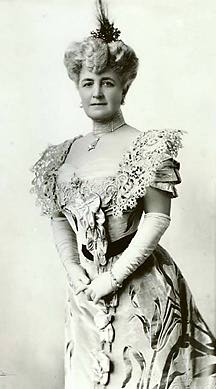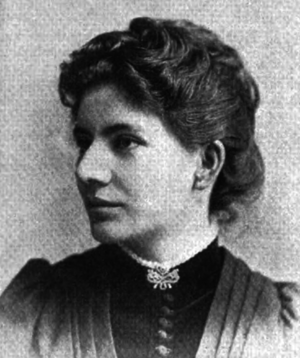World's Congress of Representative Women facts for kids
The World's Congress of Representative Women was a special meeting held in May 1893. It was part of the big World's Columbian Exposition, also known as the Chicago World's Fair. This event was a chance for women to share their ideas and concerns.
Over one week, there were 81 meetings. These meetings were planned by women from all over the United States. About 150,000 people came to listen to nearly 500 women speak. These speakers came from 27 different countries!
The World's Congress of Representative Women was organized by a group called the World's Congress Auxiliary's women's branch. Bertha Honoré Palmer, a very important woman from Chicago, led this group. While men's groups held many different meetings on various topics, the women's group held just this one big congress. It was the most popular meeting at the entire World's Columbian Exposition!
Contents
The Woman's Building: A Special Place for Women
The Board of Lady Managers was a group of 117 women, and Bertha Palmer was their president. This board was in charge of all women's activities at the World's Fair. They decided to build a special place called The Woman's Building.
This building was designed by Sophia Hayden, who was only 21 years old! It was a showcase for women's art and creativity. Women artists decorated the building. For example, Enid Yandell and Alice Rideout, both 19, sculpted parts of the building. Inside, there were large paintings, including Modern Woman by Mary Cassatt and Primitive Woman by Mary MacMonnies. Other women like Candace Wheeler and Sara Hallowell helped choose the art for the inside.
The Board of Lady Managers also built a Children's Building. This was a childcare center for parents visiting the fair. They also created a dormitory (a place to sleep) near the fairgrounds for women traveling alone or with young children.
Important Women at the Congress
Many famous and influential women attended the World's Congress of Representative Women. They came from different fields and backgrounds to share their knowledge and experiences.
Speakers and Leaders from the United States
- Jane Addams
- Susan B. Anthony
- Hallie Quinn Brown
- Elizabeth Cady Stanton
- Fanny Jackson Coppin
- Barbara Galpin
- Frances Ellen Watkins Harper
- Hanna K. Korany
- Mary Kenney
- Lorraine J. Pitkin
- Mary Stuart Smith
- Lucy Stone
- Fannie Barrier Williams
- Sarah Jane Woodson Early
International Participants from Germany
- Auguste Förster
- Anna Simson
- Hanna Bieber-Böhm
- Käthe Schirmacher
What Happened After the Congress?
The women who organized the World's Congress of Representative Women achieved their goals. They showed that women could manage big projects. They ran offices, gathered resources, paid workers, and signed contracts. They did all of this without going into debt, which was a problem for some of the men's groups.
After the World's Fair, the World's Congress Auxiliary Building, where the meetings were held, was given to the Art Institute of Chicago. Sadly, The Woman's Building was torn down. The beautiful mural by Mary Cassatt was lost.
However, Bertha Palmer's leadership was recognized. President William McKinley appointed her as the United States Commissioner for the Paris Exposition of 1900. She was the only woman from any country to receive such an honor!



